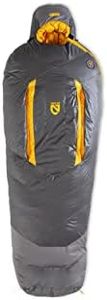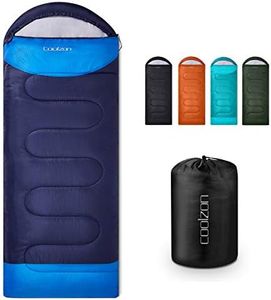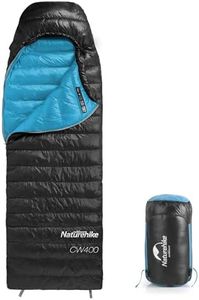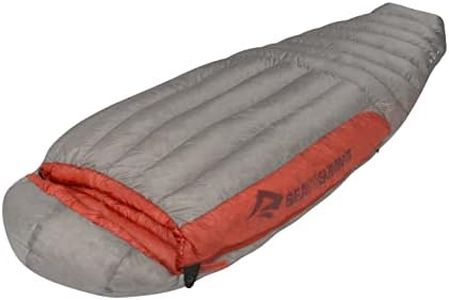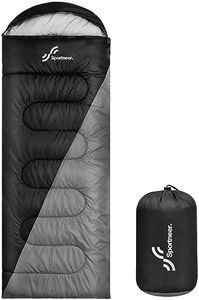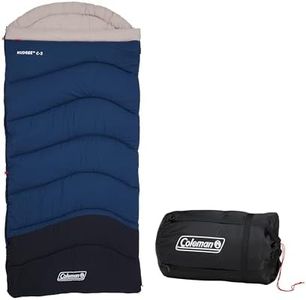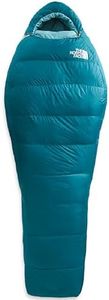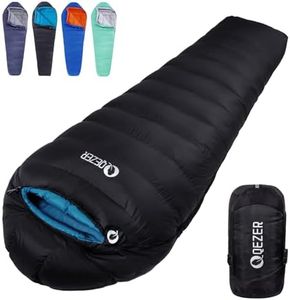We Use CookiesWe use cookies to enhance the security, performance,
functionality and for analytical and promotional activities. By continuing to browse this site you
are agreeing to our privacy policy
10 Best Winter Sleeping Bag
From leading brands and best sellers available on the web.Buying Guide for the Best Winter Sleeping Bag
Choosing a winter sleeping bag is all about staying warm, comfortable, and safe when temperatures drop. The right sleeping bag will not only protect you from the cold but also be practical and comfortable for the conditions you plan to face. It's important to think about where and how you'll use your bag—whether for camping, backpacking, or mountaineering—and match the features to your typical environment and activity level.Temperature RatingThe temperature rating tells you the lowest temperature at which the bag will keep an average sleeper warm. It's crucial for winter sleeping bags, as this is what safeguards you from cold conditions. Bags are often rated for a 'comfort' temperature (where you’ll feel good) and a 'limit' or 'extreme' temperature (the lower end of survival). Look for ratings in the range you'll typically face: bags with a rating around -10°C to -20°C are suitable for moderate cold, while options rated even lower are for extreme winter conditions. Pick a sleeping bag with a temperature rating slightly lower than the coldest temperature you expect to encounter, just to be sure you're always warm.
Insulation TypeInsulation is what keeps you warm inside the sleeping bag and usually comes in two kinds: down (feathers) and synthetic (man-made fibers). Down insulation is very warm for its weight and packs small, but it loses warmth when wet. It's great if you prioritize packing light and will be in dryer winter conditions. Synthetic insulation stays warm when damp and is generally cheaper, but is bulkier and heavier. If your trips might be damp or you're worried about moisture, synthetic can be a safer bet. Your choice should match your adventure—lightweight and dry for down, damp or rough use for synthetic.
ShapeWinter sleeping bags come in a few shapes, the most common being mummy and rectangular. Mummy bags are snug and shaped to your body, which helps retain warmth better in cold conditions. Rectangular bags are roomier but can let more heat escape. If warmth is your top concern or you want to save weight and space, a mummy shape is best. If you value comfort and don't expect extreme cold, a rectangular shape can be more comfortable, especially if you move a lot in your sleep.
Weight and Packed SizeThe weight and packed size matter most if you’ll be carrying your sleeping bag in a backpack. Lighter bags are easier to hike with, but may sacrifice some durability or warmth unless they use high-quality insulation. Winter bags tend to be bulkier, but there’s a lot of variation. If you’re backpacking or mountaineering, aim for a good warmth-to-weight ratio and check that the packed size fits your bag. For car camping, weight and packed size are less important.
Shell Material and Water ResistanceThe outer fabric (shell) needs to be tough enough to handle rough use and offer some water resistance against snow or condensation. Look for sleeping bags with durable, tightly woven fabrics and treatments like DWR (Durable Water Repellent), which help shed moisture. This feature is especially important if your adventures involve snow, condensation, or damp tents. If you use a bivy sack or tend to sleep under the stars, prioritize a bag with a water-resistant outer shell.
Features (Hood, Draft Collar, Zippers)Extra features make a big difference in winter. A well-insulated hood prevents heat loss from your head, and a draft collar keeps cold air from sneaking in around your shoulders. Draft tubes along zippers also stop warmth escaping through the zipper openings. Consider what features are most important for your comfort, especially if you camp in very cold, windy, or variable weather.
